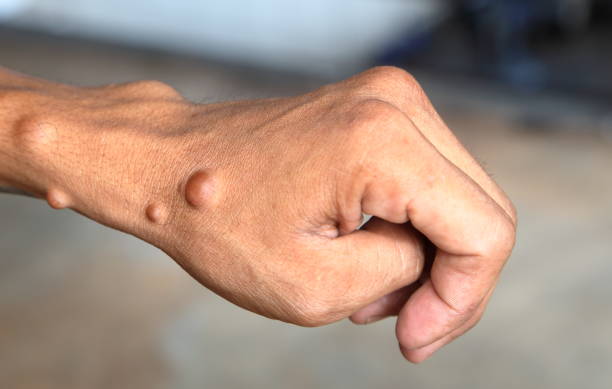Neurofibromatosis is a group of genetic disorders that causes the formation of tumours in the brain, spinal cord, and nerve tissues. It affects the development and growth of nerve cell tissues, which send signals between the brain, spinal cord and other parts of the body. Usually, the tumours formed are benign (non-cancerous), but sometimes they can be malignant (cancerous).
Neurofibromatosis describes 3 different health conditions: neurofibromatosis type 1 (NF1), neurofibromatosis type 2 (NF2) and schwannomatosis (SWN). NF1 is the most common type of neurofibromatosis. It is usually diagnosed in early childhood and is called von Recklinghausen disease. NF2 and SWN are rare and usually diagnosed in early adulthood
Cause
Neurofibromatosis is usually caused by genetic defects or mutations that are either inherited from a parent or occur spontaneously at conception. The different types of neurofibromatosis are caused by different gene mutations.
The NF1 gene is located on chromosome 17, producing neurofibromin, a protein that regulates cell growth. This gene mutation causes neurofibromin loss, which makes cells grow uncontrollably.
NF2 gene, on the other hand, is located on chromosome 22, which produces merlin, a protein that suppresses the growth of tumours. So, the mutation of this gene leads to loss of merlin and causes uncontrolled cell growth (tumour).
The mutation of two genes, SMARCB1 and LZTR1, causes SWN. These genes suppress tumours, but their mutation can lead to the formation of tumours.
Symptoms of Neurofibromatosis
The symptoms of NF1 include:
- Light brown spots on the skin (cafe au lait spots).
- Tiny growths in the iris.
- Multiple freckles in the groin area or the armpit.
- Tumours along the optic nerve.
- Bone deformities.
- Short stature.
- Osteoporosis.
- Nerve-related pain.
- Learning disabilities.
- High blood pressure.
- Large head size.
The symptoms of NF2 include:
- Dizziness.
- Loss of hearing.
- Poor balance.
- Weakness of the muscle of the face.
- Headaches.
- Cataracts.
- Uncoordinated walking.
The symptoms of SWN include:
- Chronic pain.
- Pain from the enlarging tumours.
- Weakness in the fingers and toes.
- Numbness and tingling of the toes or fingers.
- Loss of muscle.
Treatment
Neurofibromatosis does not have a permanent cure, but the treatment can help control some of the very disturbing symptoms. The treatment options include:
- Surgery for bone problems.
- Surgery to remove the tumour.
- Chemotherapy or radiation if the tumour is cancerous.
- Cataract removal surgery.
- Stereotactic radiosurgery.
- Aggressive treatment of pain caused by the condition.
- Therapy including counselling, physical therapy, and support groups.
- Auditory brainstem and cochlear implants.



